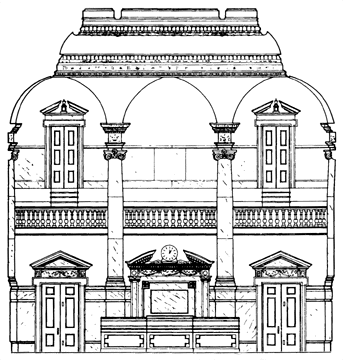
In the decade following its creation, the bicameral system faced several major challenges. Many were rooted in colonial politics, but some grew out of religious conflicts and the English Civil War. Puritan governors, appointed by the Parlimentary Commissioners in England, twice convened unicameral legislatures in Maryland, first in 1654, and again in 1657. Catholic Lord Baltimore regained control of the colony in 1658 with the aid of several loyal Protestants, including Josias Fendall. To show his appreciation, Baltimore appointed Fendall governor of Maryland. In 1660 though, Fendall turned traitor, conspiring with the Lower House to abolish the Upper House and establish a commonwealth system of government (Archives of Maryland I: 388-391). "Fendall's Rebellion" was short-lived, as Proprietary forces quickly regained control of the government. Once restored, the Upper House kept the same composition for the next century. The only major change was the removal of the governor's position from the Upper House in 1675.
18th Century. The Constitution of 1776 officially established the Senate and severed all ties between the Senate and the Governor's Council. An electoral college was created to choose fifteen senators. Voters in each county selected two electors, while Baltimore and Annapolis each sent one elector to represent their interests. Although each elector represented a specific county or city, the senators were not required to represent jurisdictions. The only stipulation provided in the Constitution was that nine senators should be residents of the Western Shore, and the other six of the Eastern Shore. Each senator served a five-year term. The first elections under this system took place in 1781 (Const. 1776, secs. 14-18).
19th Century. The elections of 1838 effected the first major reform of the Senate. Voters ratified numerous Constitutional amendments regulating the geographic distribution of Senate seats, a process which had been overrun by economic, social and political biases. The electoral college was abolished, and voters for the first time chose their senators. Twenty-one senators were elected; one from each county and Baltimore City. Senatorial terms expanded to six years, and a rotational election system was established so that only a third of the senators stood for election every two years. The amendments also abolished the Governor's Council (Chapter 197, Acts of 1836, secs. 2, 3, 13). To this day though, the Senate still functions as the Governor's Council when it confirms or rejects appointments made by the Governor.
Despite the political turmoil of the mid-nineteenth century, in Maryland, the Senate experienced only minor changes. The Constitution of 1851 reduced senators' terms to four years, while the Constitution of 1864 divided Baltimore City into three legislative districts, each with their own senator. The Senate was left untouched by the Constitution of 1867, and would remain so for nearly a century.
20th Century. While Maryland's population grew and shifted in the twentieth century, its legislative apportionment plan remained unchanged. Burgeoning urban and suburban areas were severely under-represented, while the older, rural counties continued to dominate the Senate. In 1964, the United States Supreme Court directed the Maryland General Assembly to draft legislation to reapportion the legislature based on the "one man, one vote" principle. The Supreme Court had decided in a series of cases that malapportioned state legislatures violated the equal protection clause of the Fourteenth Amendment. A special session of the General Assembly was called in 1965 to deal with the reapportionment issue. Legislation resulting from this session divided Maryland into sixteen senatorial districts, with each district electing from one to seven senators (Chapter 2, Acts of Special Session 1965). For the first time in Maryland's history, some districts contained multiple counties. These changes had their greatest impact on the historically over-represented Eastern Shore, as the nine counties were combined into two districts and elected only four senators between them. Although many counties were combined to form single districts, none were divided into multiple districts. As a result, the Senate elected in 1966 was not truly representative of the state's population, but came closer to that objective than any previous legislative body.
A Constitutional amendment approved by the voters in 1972, continued the process of electoral reform. The amendment created 47 legislative election districts based on population. For the first time, districts encompassed parts of a county, multiple counties, or parts of adjoining counties. Since the 1974 elections, each of the General Assembly's 47 senators has been elected from one of these districts.
© Copyright Maryland State Archives